– Welcome everyone to Wednesday Nite @ the Lab. I’m Tom Zinnen. I work here at the UW-Madison Biotechnology Center. I also work for the Division of Extension here and on behalf of those folks and our other co-organizers, Wisconsin Public Television, the Wisconsin Alumni Association and the UW-Madison Science Alliance, thanks again for coming to Wednesday Nite @ the Lab. We do this every Wednesday night, 50 times a year. Tonight, it’s my great pleasure to introduce to you Matthew McCarty. He’s a professor of Roman archeology at the University of British Columbia, which is in Vancouver. One of the prettiest places on the planet. He was born in Troy, New York, which has not recently been described as one of the prettiest places on the planet. (audience laughing) He went to high school at Choate in Connecticut and then he went to Yale University where he studied art history and classics.
That means that he reads and speaks French and Italian. He reads Latin, German, Greek and Turkish, and he can read and speak Romanian. (audience murmuring) I’m envious. (audience laughing) Then he went to Oxford University in England and got his master’s and PhD there, in archeology. Then he returned to Yale for two years, then went to Princeton for three years and has been at the University of British Columbia for the last four years. Delighted that he’s here in Madison. Another person who’s really delighted but really disappointed is my 14-year-old daughter who when I told her tonight’s talk was on Roman archeology, she went, “Aww,” because she wanted to be here but she had swim team. So that’s high praise. Tonight he’s going to be talking to us about Between Trench and Lab: Reconstructing the Roman Mystery Religion of Mithras. So would you please join me in welcoming Matthew McCarty to Wednesday Nite @ the Lab. (audience applauding)
– Thank you for that kind introduction and thank you to all of you for coming out tonight to hear this. It’s a real honor to be here at the University of Wisconsin-Madison not only because it’s a great institution, but because my wife is a proud graduate of this institution. And on a night we’re talking about religion, I should probably confess that she very quickly converted me to be a Badger fan. (audience laughing)
– [Man] What was the baptism?
– Name all the basketball players. (audience laughing) So what I want to do tonight is to pose a simple question: how do we recreate, reconstruct an ancient religion for which we have few sources? How do we build it literally from the ground up? And I’m going to do that by introducing you to archeological science, archeology as practiced in the field, and my own excavation of a temple to the Persian god Mithras, in the middle of modern Transylvania. 1900 years ago, the Roman Empire was at its height. At this time, a new religion was spreading like wildfire through that empire. It focused around a traditional god from the Middle East. It attracted worshipers from all across Roman society, but especially from its lower end: slaves, former slaves, maybe the urban middle class. And it forever transformed society and religion in the Roman world.
Now if this story sounds familiar to you, it’s because it’s also the story of early Christianity. But that’s not what we’re here to talk about tonight. We’re here to talk about something that’s far less well known, far less talked about and far less attested: the cult of the Persian god, Mithras. In fact, in the 19th century, the French scholar, Ernest Renan could quip, “If the world hadn’t become Christian, it would have become Mithraist. ” And yet, this is a cult shrouded in darkness, one that we have to look in the ground to understand more fully. And if you take anything from tonight’s talk, let it be these two things. First, that archeology can do this for us. It can tell us what religion was really all about to ancient worshipers. And second, I want you to take away that the cult of Mithras, religion in general, is less in the ancient world about some fixed, bounded doctrine. It’s not some thing, but rather we need to think about it in terms of individual worshipers, people, and the practices they performed and the ways that those could interact, intersect, relate and create new and hybrid forms of worship.
But before we get there, I want to say a few words about what we know about the cult of Mithras and how we know it. We can’t talk about the worship of Mithras without talking about this fellow on the left with his handlebar mustache. That’s the Belgian scholar Franz Cumont. Cumont was the first to look at this cult in detail, to build a picture of it. It’s to him that we owe the comparison with Christianity. For Cumont, the cult of Mithras was very much like the cult of Christianity. The cult of Mithras, in fact, paved the way in the Roman Empire for the success of Christianity. For him, what Mithraism was, was a doctrine, a system of beliefs that focused around a saving god, Mithras. The way he got there was to start with the bits of text that survive to us. Now, when I say bits of text, I really do mean bits.
We don’t have a single text written by worshipers of Mithras that survives in literary form. All we have are brief little one-liners, mostly in Christian authors who were a bit hostile to the worship of Mithras. I give you one example on the screen there to give you a sense of the flavor of these. It’s Justin Martyr, who’s one of the theologians who works out orthodox Catholic eucharistic theology, and he says, “Jesus took bread, gave thanks, do this in remembrance of me, took the cup,” and then he throws in a little line. “Those wicked Mithraic devils imitate this. ” That is, what they do is derivative. It’s knock-off religion. It’s clearly quite hostile. So the sorts of sources that we have at our disposal aren’t nice, clear, transparent windows into the past. These texts are sometimes possibly willfully misrepresenting the cult of Mithras.
Not the sort of thing that I would want to use as primary evidence. That said, we do glean something from this. Justin and all ancient authors who mention Mithras don’t talk about Mithraism. That’s something that comes in in the 19th century as a term. They talk about in Greek, (speaking Greek), the mysteries of Mithras. Well, what does this mean? Think away the word “mystery” as you know it. This is not what mysteria in Greek means. In Greek, mysteria means not something hidden, not something, a type of knowledge. It means something that changes your status. It makes you blessed, for example.
It makes you extra lucky. It gives you some kind of different status. The mysteries are something that is done. They are an act, and this is our first clue that what we should be looking at in trying to understand religion in the Roman Empire or the religion of Mithras is not belief in doctrine. It’s things done. It’s acts. Including acts of initiation. Now the other thing, these texts in hand that Cumont did, was draw together a range of monumental material sources from across the Roman Empire. Most of these were images like this. And images like that exist from Syria to the edge of Britain, in different media, in different styles, all made by local artists.
They all show a similar scene at the middle. Here, you see the god, Mithras. He is youthful with curly hair. With his left knee, he drives a bull into the ground. There’s the bull’s bent knee. With his left hand, he grabs the snout of that bull, yanks it up so that he can plunge a dagger into the shoulder or neck of that bull. The scene is often surrounded by a veritable zoo of animals: a dog, a snake, a scorpion, a raven, and sometimes other figures. In this case, a personification of the sun, a personification of the moon, and two torch bearers, one on either side. There are variations. This is not a canonical image.
It’s a loosely adapted image across the empire. The other thing that we have are the monumental buildings in which these images were displayed. We’ve got about 40 of them from across the empire. They tend to be laid out in similar ways. They have long benches on either side flanking a central nave, and the image of the god at the far end stabbing that bull. Now we call these sanctuaries today, Mithraea. Singular, Mithraeum. In the ancient world for an ancient worshiper, the term most commonly used to describe them was “cave. ” These are caves that you go to. And oftentimes, the buildings themselves were set slightly underground to give you this cave-like environment.
So this is what we have. Images and buildings, monuments. So what do we do with them? Well, in the late 19th century and through to today, if you want to make a religion, if you want to reconstruct a religion, you want to reconstruct beliefs and doctrine and dogma. And that is precisely what people have done. They have, for example, taken this image and asked, “What does it mean? What does it symbolize to a worshiper?” And they’ve said, “Well, all of these animals, “they might be different constellations. “This whole religion could be about astronomy or astrology, “about telling initiates secret truths “about the way the cosmos work, “giving them insider knowledge into how the universe moved and shaped human being and human fate. ” Well, I want to stop right there. I want to push the pause button and I want to say that’s all fine and good, but in the ancient Roman world, when we say religion, what we’re mostly talking about is not things, not matters of belief, not matters of orthodoxy and thinking specific things, but matters of doing, matters of orthopraxy, doing things right to have the gods be on your side. And in the case of the cult of Mithras, before we talk about belief, doctrine, those high up things, maybe we ought to start by asking more basic questions, questions that have largely been ignored. What do you do in these sanctuaries? How often do you do it? Who does it? And how do those practices relate to one another in time and in space across the Roman Empire? So let’s ask different questions.
And it just so happens that these are the sorts of questions that we can answer with careful, contextual archeological inquiry. So let’s try to answer them. I want to take you to the edges of the Roman Empire to a site that I excavated between 2013 and 2017. So here’s Rome. We’re going all the way up to the Roman province of Dacia on the far side of the Danube. Dacia corresponds roughly to the modern region of Transylvania in Romania. Now, Dacia’s an interesting province in its own right. It was the last province to be conquered by the Roman Empire, the last province in. It only became a province in 106 CE, and it was the first province to be abandoned by the Romans around 250 CE. So it’s only a Roman province for a very short period.
But while it’s a Roman province, a few new cities are built and one of these is the provincial, one of the two provincial capitals, Apulum. Today, Apulum is a modern county capital called Alba Iulia, a quaint central European city that’s dominated by this star-shaped 18th century Austrian fort that was built when Transylvania was right on the border between the Austrian Empire and the Ottoman Empire in the Balkans. Over the last two decades, that fort has been restored literally brick by brick, complete with gaudy Viennese Baroque sculpture all over the gates. And over the summer, it becomes a tourist hub in this part of Europe. Every day at noon there’s a group of reenactors dressed as Austrian soldiers who does a changing of the guard. Every Friday night over the summer, there’s a Roman versus Dacian battle reenactment. And the fort itself is filled with stands, carts selling tourists tchotchkes, fresh-squeezed lemonade, and of course, the beer tents. Necessary in this part of Europe. That star-shaped fort sits directly over a Roman castrum, a Roman legionary fort. This was the main legionary headquarters in the province of Dacia.
This is where the army was based. And on the outskirts of that fort, a town developed. And it’s in that town just outside the fort that the temple to Mithras sits, basically in the backyard of a 1960s communist-era house. (audience laughing) In 2008, while the fort was being rebuilt brick by brick, a local developer thought just outside the fort is a great place for a boutique hotel. So he planned to convert this property into a hotel. There are laws in Romania and there are laws in Wisconsin that wherever you’re close to a historically protected site, before you can do any building, you’ve got to bring in archeologists to make sure that before you build, there’s nothing of huge significance, historical significance on the site. And so in 2008, a team from the local museum came onto this property and what they did was just sink a series of holes to see what was there. So they dug the first hole and they found what they thought was a little medieval well. Not too exciting. They dug a second pit, they found nothing.
They dug a third pit, and they found nothing. It’s one of the truisms of archeology that you always find the most exciting stuff at the end. It’s like the last day of excavation you find the thing that’s a game changer, that’s really exciting, that keeps you wanting to come back to the site. That was no different here. Because in trench number four, they found the remains of a Roman building and in that building they found a large inscribed altar dedicated to Mithras. That was the slam dunk clue that this building was a sanctuary to Mithras. Now the developer, realizing that this was going to be very expensive to excavate and conserve quickly changed his mind and the whole site was reburied with about a third of the building excavated. And that’s where my project came in. A few years later, wanting to answer those questions about the cult of Mithras, I developed a joint excavation with a local Romanian colleague that would look at this site and offer the first scientific excavations of a temple in all of this part of Romania. And over the course of four years, one month each year, we kept coming back to this site with groups of students from our various institutions that we trained in archeological field techniques.
Now what do I mean by scientific archeology? Now that rescue excavation in 2008 and the excavation of almost every other Mithraeum that is known was focused on understanding what was there. The monuments, the big, the walls, the altars, the images. Scientific archeology and modern best practice still not widely used in central and eastern Europe, instead asks not what’s there, but how did what’s there gets to be there? What are the processes, both natural and human, that got things to be how they are? And how do we reconstruct those processes? Natural processes can be things like decay, collapse, weathering, rusting. Manmade processes are things like building, destroying, dropping, intentionally discarding. And the way we do that is by observing changes in soil that represent the way different patches of a site get created. So here I think you can see, there it’s a little bit clearer, that on the inside of that yellow line, the soil’s a little bit lighter, a little bit more yellow and it’s a little bit darker brown on the outside. Two different processes created this. So what we do is document these differences and excavate each different area independently and record it independently so that we can understand the full set of processes. In this case, that discolored patch was created because someone dug a little pit to mix mud daub, to mix mud for building with. And we could tell that because we took a sample of that soil, took it to the lab, looked at it under the microscope and saw that it was not just mud, but mud with animal dung, straw and other things mixed in.
Now this means painstakingly removing each of these archeological features, each of which represents a human event or a natural process and documenting them in drawings, in photographs, and more and more, using three dimensional imaging technologies. So for the site, we now have 3D models of everything that was there, every feature on the site that we can use, look at and manipulate, take measurements from. So even though by excavating we remove material, we’re able to always reconstruct the site as it was before we began. And of course, the other thing we do is focus not just on the monumental, but also on the small, the fragmentary. Things like artifacts, manmade objects, the smallest piece of ceramic, the smallest piece of iron, and ecofacts, things like bone, charcoal, and burned seeds. Now this is a slow process and to give you some sense of that, the area in green was what that team from the local museum dug in one week. The yellow is the area we dug in three months. So you know, it does take much longer, but it gives us much richer knowledge about the past. The other thing to take from this is that that whole green area, most of the building was totally cleared out. When I took over the site, I was given a milk crate of a few bits of pottery, couple pieces of bone and some other random things that they had found.
No sense of where they came from, how they were found, anything that would allow me to reconstruct how those came to be in the archeological record. So in many ways, this third of the building is an archeological write off. The other thing that the museum excavators said was that this was a well preserved Roman site. There were no human interventions after the Roman period that affected the building. Well, within a few weeks, it became clear that that wasn’t the case. You’ll see how the walls of the building stop right there. They are cut, when in the 11th century someone decided to build a giant house in one corner of the Mithraeum. And down at that corner at some point after the Roman period, a transverse slump opened up. That’s basically a sinkhole. The whole bit of the building just sank and slid down about a meter and a half creating a giant hole in the landscape of Alba Iulia that for six centuries was used as the city garbage dump.
(audience laughing) Now, that 11th century house is really important for the archeology of medieval Romania. It’s the first house that we have. It is well preserved. We even had a woven reed mat that survived, one of the first textiles to survive from this period in Romania that survived when the building burned down. But we’re not talking about the medieval period here tonight, so we’ll save that for another day. Instead, what I want you to look at is this hearth, this oven in the medieval house. And I want you to notice the way that that oven reuses bits of Roman stone. So that down at the bottom, that’s a column. I think you can see the curve, a little bit of molding there. Up here, there’s a squared block that’s been reused.
And right here, that curved piece is probably the top of a well. It’s probably a wellhead. And so it’s clear that what happened in the 11th century is that the builders of this house went into the ruin of the Mithraeum and quarried it for building material, futzing up all of the archeology. You’ll also remember that I showed you that giant altar. When the excavators found it, it was found with this inscribed side down and this side up. And you’ll notice on the back of it the way that it’s been hacked. Clearly, the altar was simply too heavy to move on its own. It weighs over 700 pounds. So instead of lugging the whole thing around, they just hacked off bits that they could reuse. So this is not a pristine Roman site.
There is all of this later intervention that has affected the archeological record. But we can still say something about the building and we can still say something about the rites that took place within it. So for the building itself, I’ve got the plan up top and down here, a drone photo of it that I think is the best place to sort of see and understand how the building works. I should also say that we were able to date the building because it’s built over an earlier trash pit. And because it’s built over that trash pit and it closes that trash pit, the latest thing in the trash pit has to be earlier than the building of the Mithraeum. In Roman archeology, we date things primarily by ceramics. We have a very tight chronology for ceramics and in this case, in that pit, we have fragments of a bowl that was made in central France. We have a couple of thin-walled drinking vessels that come from modern Slovenia. And these we can all date to about 150 to 160 CE. So this means the Mithraeum is built probably shortly after 160, maybe 170, 175-ish.
This is neat because it’s one of the earliest Mithraea, the earliest datable one in the province of Dacia. Now for the building itself, just to orient you and walk you through it, up here, you’ll notice that the foundations, and we are looking at foundations, right. When we think about ancient architecture, the first thing many of us picture are things like Greek temples that are standing and built in stone, or Roman architecture, we think of like the Coliseum built in stone and concrete. Most ancient buildings, most buildings in the Roman Empire are not built of stone. They are not built of concrete. They are built of dirt. And maybe wood. 99% of every building built in the Roman Empire is dirt. And it’s no different here. The foundations are built of rubble and the walls would have been wood and some configuration of mud.
That all doesn’t survive. It’s collapsed. And this is why if you go to many archeological sites, you’ll walk around and the walls will be about knee height, right. That’s what there was in permanent material. So up here, that foundation dips down a little bit, probably because there was a door sill there that has been robbed out in the medieval period, which suggests that this is the entrance. You come in on this side and you enter into a kind of antechamber, a foyer that has a little room to one side that’s set on a much lighter foundation, sort of flimsier foundation, probably a sort of storage closet. From there, you pass in to the main nave of the building, which is flanked, as is the case with most temples to Mithras, by those two benches. Now, the neat thing about our Mithraeum is that if you look, this is the inner wall of that nave, you see that it’s built of very large stones that are mortared together. Those were visible in antiquity. They’re built of a different material than the much smaller stones that make up the outer wall.
Why is that? That’s to give you the experience of being in a rocky cave. That’s the special effect of the architecture here. From that nave, there’s a mortar step that brings you up, there’s the step, that brings you up into a rear niche. And that niche would have been where that image to Mithras was displayed. It doesn’t survive, but we can say that it wouldn’t have been very big. There’s no separate foundation for it, so it was of moderate size. All of that means that based on similar buildings and what we know about building techniques in this part of the Roman Empire, we can reconstruct the elevation of the Mithraeum to look something like that with the big central altar here in the middle. We also had a pair of smaller statue bases that were smashed up and found in the debris covering the site. Those, we’ve reconstructed here and here. These series of inscriptions were all dedicated by the same person.
And that tells us something about the social context of this Mithraeum. They were all paid for by a man named Vitalis. Now, from his name, we can say something about Vitalis. He has a single name. He’s not Publius Aelius Vitalis Roman Citizen. He’s just Vitalis. In Roman terms, that means he’s probably a slave. Think away what you know about slavery in the U. S. Slaves in Roman society could acquire wealth, could pay for, be able to afford dedications like this.
And in this case, Vitalis is probably the person who paid for the entire sanctuary because he dedicates all of the furniture. Vitalis also tells us that he is a treasurer. A treasurer for what? In this case, he’s almost certainly a treasurer for the imperial customs system. There’s a customs zone that runs around this part of Europe and they have very wealthy treasurers, people who are, who could acquire the means to dedicate a sanctuary like this. So we can say something about where Vitalis worked. He worked for the customs system. Now the main altar is dedicated to Mithras. One of those statues is dedicated to Couto Potes, who’s one of those torchbearers. Standard stuff. But then Vitalis makes a weird dedication to transitos dei, to the transit of the god.
That’s unusual. In fact, there are only five other examples of dedications to the transit of the god. One of them is a statue that shows Mithras carrying a bull over his shoulder. So maybe it’s like the transit, like Mithras going somewhere with a dead bull on his shoulder. (audience laughing) Still, that behavior, that dedication to transitus, only happens at other sites where the Mithraea are being used by customs personnel. What this tells us is that Vitalis has learned about and learned how to worship Mithras at work through his social network of fellow customs workers. So what we’ve been able to do is tell what the building was like and we’ve been able to tell that the person who paid for it learned about Mithras and learned how to worship Mithras in the context of the imperial customs system. That’s kind of cool from a micro historical perspective. But we can go even further. Now I said what the medievals didn’t muck up, The 2008 excavators did muck up.
There was one deposit that was left untouched in both periods. It sits in the middle of the nave in a box that was set below the level of the floor of the building. So this was put in place before the floor was laid. And this box was constructed out of a series of ceramic tiles, and it was clearly meant to delineate something important inside it. Excavating the contents of that box revealed that it contained a variety of burned ash, charcoal and some bone. Now one of the things we try to do to capture all of the ecofacts possible, especially from clearly important deposits like this, is to do soil flotation. We take the buckets of excavated soil after they’ve been documented and put them in essentially a water tank. Things that are nice and light like charcoal or charred seeds will float to the top where they can be skimmed off and studied. Things that are a little bit heavier can be run through several series of mesh screens to capture things of different size and then hand sorted to pull out bone and chuck away rock and things. And this lets us reconstruct what went into that box.
Animal bone represented most of the contents of the box. These bones were primarily from chicken and piglet. And what I want you to see here is the fact that you’re looking at mostly legs and wings of chickens. You’re looking at the meaty bits. Breasts in ancient chickens not that meaty. That’s a modern thing. Chickens are basically pigeons in the ancient world. All of the meat’s on the legs. So we have meaty bits. We also have some piglets that are preserved from trotter to tail.
So whole pigs, bones from entire pigs that come out of there. Because these are meaty bits and because they’re nice animal bits, it suggests that we’re looking at food, we’re looking at the remains of a feast. The other thing that I want you to note is that some of these bones look different than others. So here we have a couple of chicken legs and you’ll note that some of them show signs of being burned. Right, they’ve been set on a flame on their own. Now this is interesting because it tells us that some of this food wasn’t consumed. It was instead burned. And in the Greco-Roman world, there’s a logic of offering burned food to the gods for them to eat. So what we’re seeing is a banquet in which the god took part, eating the same cuts as his worshipers. We also have a variety of charred seeds from that deposit.
We have some grape seeds that might’ve been burned either as whole grapes, as again, as a food offering. We have bits of weeds. We have cleavers and bindweed which are most of the seeds in this deposit. Those sorts of weeds produce very pretty flowers and it looks as though these are flowers that have been collected and burned also as an offering. And then we have other kinds of fruit and wild vegetable, things like a blackthorn and probably a radish. So again, what we’re getting a picture of is something that’s partially offered, foods that are offered and flowers that are offered to the god as well as food that’s consumed by people. So if we want to reconstruct the whole process that got things there, we had a selection of meaty bits from butchered animals. None of the inedible bits show up. Some of these foods are burned for the god. Some are eaten by worshipers.
Some of that material is collected and it’s buried under the floor before the building is completed. This is, in other words, a foundation deposit and it’s meant to commemorate an event, a meal between worshipers and god. And it’s not a small meal either. The amount of meat produced just from the bones in that box would have been between 30 and 120 kilos of meat. So this is a pretty big feast that’s being consumed. We can tell more though. This suggests to us that before the Mithraeum is done, before any of that symbolic stuff happens, what matters to the worshipers is that communal dining aspect of the cult. This is what they’re commemorating. They’re not commemorating the stars, they’re not commemorating astrological symbolism. What matters to them is being together as a group.
Now we can also figure out when they were doing this, because we know when all of these various plants were in season, when they were available to be burned in this part of Romania. They tend to cluster at the end of summer. We can also from the bones, tell how old the pigs were when they were slaughtered. And we know that pigs in the Roman world were farrowed twice a year. And that farrowing actually lines up well with the seasonality of the fruits and plants. Which tells us that this foundation, this Mithraeum was founded in late summer, early autumn, between August and September. So that is a high degree of precision. Also on the astronomical front, it is not at any of the big cosmological events that happened throughout the year. It’s not at the equinox, it’s not at the solstice. It’s actually smack between them.
So again, this suggests to us that the cult isn’t about astrology. It’s about communal dining. We can go a step further, too. Because our deposit under the floor is just one of several foundation deposits at Mithraea across the empire. These have never been recognized as belonging to a group together. None of them have been studied in as much detail as ours, but they exist at a number of Mithraea. So, for example, all the way in Syria at Dura-Europos, a tile box sat under the brick floor of the Mithraeum built in 169 CE. At Tienen, a tile box that looks identical to ours, was excavated a few years ago. At Bornheim, apologies for the images. At Bornheim, when the Mithraeum was first built in about 150 CE, a tile box contained remains of burned and unburned foods.
When that Mithraeum was rebuilt 150 years later, a new box was set up right next to that first box containing similar things. So this is a long rite. It doesn’t happen at every Mithraeum. Right, they’re only a few, but they’re spread across the whole of the empire. All of these Mithraea, in other words, were founded with common rites. Now this is important because it is our first evidence for shared ritual practices at these Mithras temples across the empire. But again, not all of them. But that leads us to a question. How do you know how to properly inaugurate, how to properly found a Mithraeum? How do you know how to perform the ritual to start these off? Well, there are a couple of options. The most basic way you learn how to do religion in the ancient world is by watching, right.
You observe what others do, you learn how to do it yourself, and then you perform it. There’s no formal ritual education in most ancient religion. The problem with the foundation rite is you only watch it once. You only see it once in your lifetime. Even at a site like Bornheim where there are two boxes, there are 150 years between them. No one in the Roman world was living that long. So it’s not by watching. Well, option two is that you write it down. You have some kind of prescriptive book of common prayer that might be used. There’s almost no evidence for these in the ancient world.
Full stop. And in the case of Mithraism, there’s enough variation among these deposits. They’re all set roughly in the same part of the Mithraeum, but they include different kinds of foodstuffs, sometimes different containers, pots instead of boxes. There’s variation, which suggests that there’s not a sort of prescriptive text that tells you what to do. So what’s left? Well, maybe people are just doing rites they do in other places. People do have foundation rites in the Roman Empire for different kinds of buildings and temples. None of them though, look like this. None of them share this level of similarity. So that really leaves us with a last option, which is that there are trained ritual experts in the cult, people who know this is how you found a Mithraeum. We might call them priests, we might call them just ritual experts, but it seems that they are present.
This is a group that we wouldn’t know about if we didn’t have archeology. They’re not mentioned in texts, they’re not mentioned in inscriptions, which only record people who pay for stuff, not people who have the technical knowhow to make it happen. So archeology is telling us a lot more about the dynamics of this cult and that it perhaps spreads along the lines of the movement of such experts. But our site tells us one more thing still about that ritual expert. It’s not Vitalis. Remember the guy who paid for our Mithraeum learned about and learned how to worship Mithras in his office in the customs department of the Roman Empire in this part of Europe. We have two other Mithraic sanctuaries that were populated and used by members of the customs office. Both of these have been excavated below the floors and in neither case are there these kinds of deposits. That means that Vitalis, who founded the Mithraeum, brought one kind of technical knowledge. You worship Mithras by dedicating to transitus.
But he must have had someone else, some other ritual expert there who knew, well, you found a Mithraeum by commemorating a group meal and burying its remains under the floor. In other words, instead of looking at Mithraism as either one set of doctrine or beliefs or one set of common practices, we ought to understand it as a series of intersections of individuals, each with their own expertise, each with their own practices. And that these networks could recombine to create unique, new, and fluid forms of a cult that were recognizable while still being distinct and local. And that is how archeology can help us to understand and reconstruct ancient religion. I would of course, like to thank all of the sponsors who’ve contributed to this research. And I should also say that archeology is very much a joint endeavor. I have worked with colleagues, archaeozoologists, paleobotanists, who have done a lot of the analysis that you’ve seen here tonight. We are a scientific community. And I’d like to thank all of you for becoming part of that scientific community in sharing these results tonight. Thank you.
(audience applauding)
Search University Place Episodes
Related Stories from PBS Wisconsin's Blog

Donate to sign up. Activate and sign in to Passport. It's that easy to help PBS Wisconsin serve your community through media that educates, inspires, and entertains.
Make your membership gift today
Only for new users: Activate Passport using your code or email address
Already a member?
Look up my account
Need some help? Go to FAQ or visit PBS Passport Help
Need help accessing PBS Wisconsin anywhere?

Online Access | Platform & Device Access | Cable or Satellite Access | Over-The-Air Access
Visit Access Guide
Need help accessing PBS Wisconsin anywhere?

Visit Our
Live TV Access Guide
Online AccessPlatform & Device Access
Cable or Satellite Access
Over-The-Air Access
Visit Access Guide
 Passport
Passport


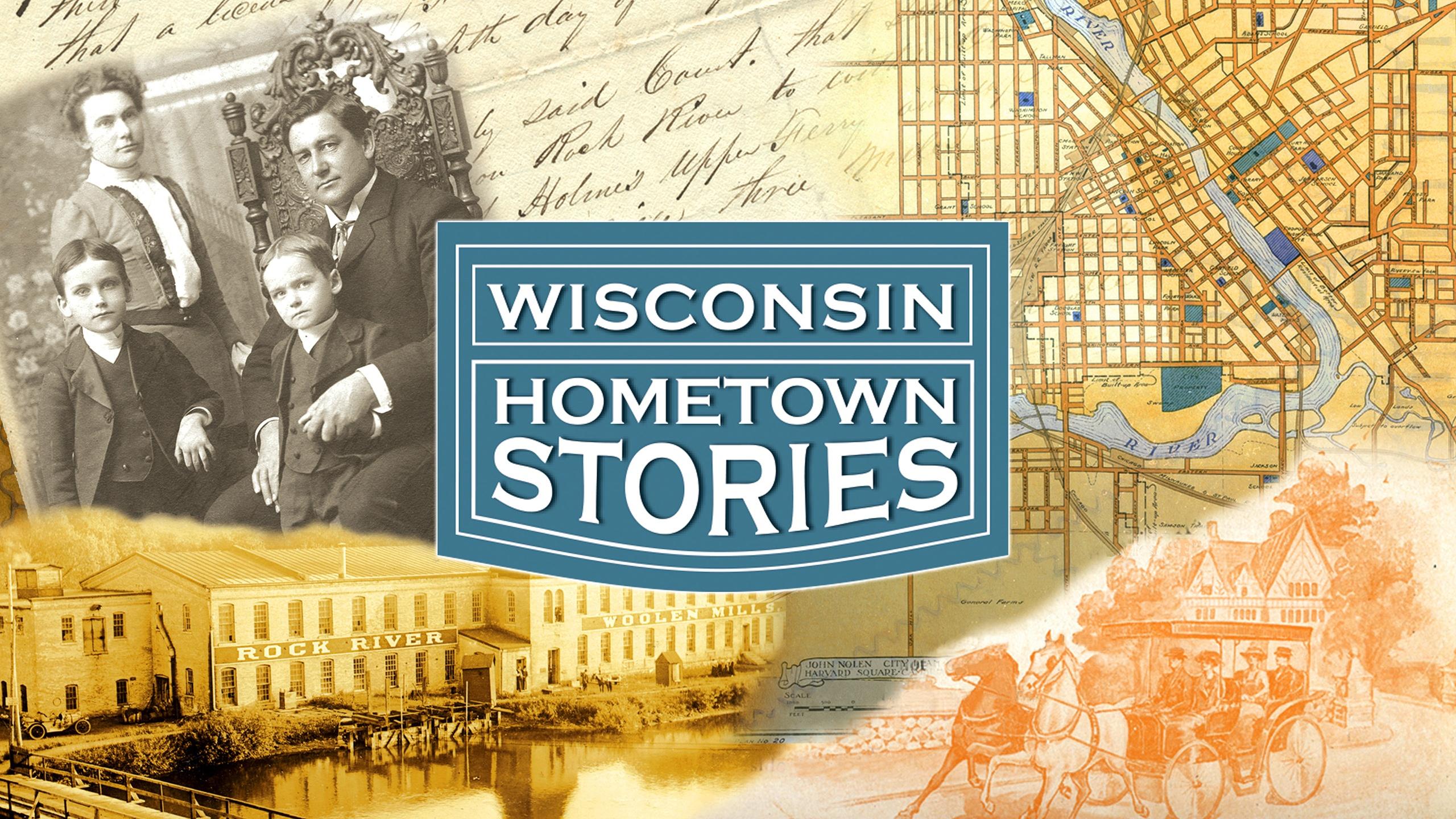




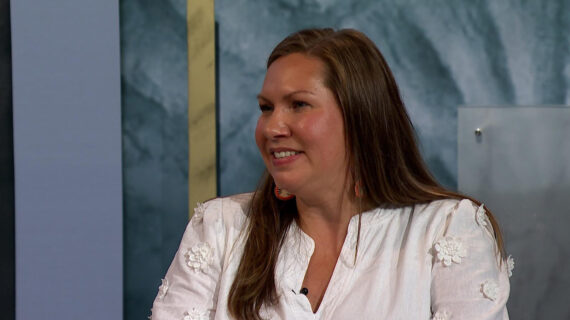
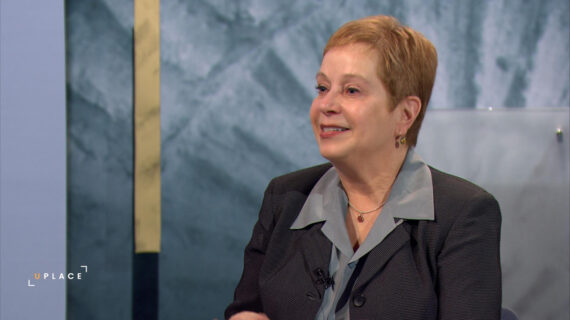

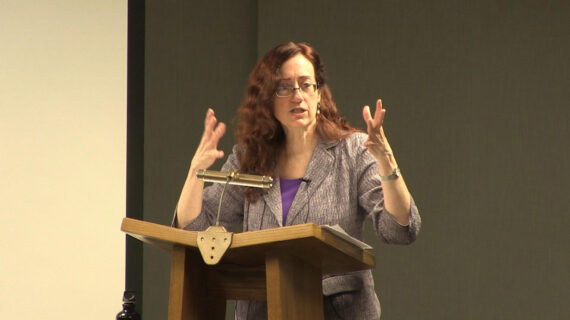
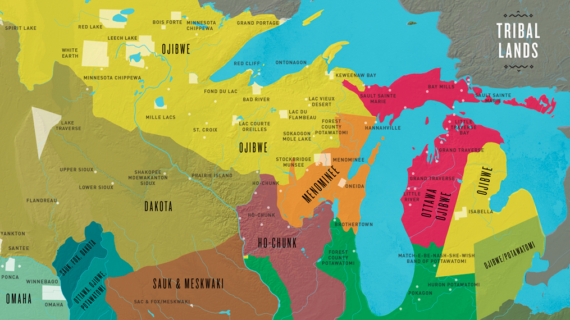


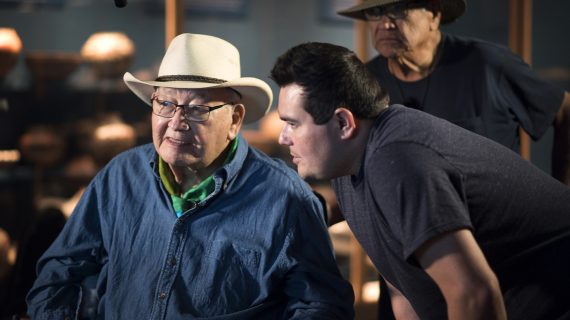

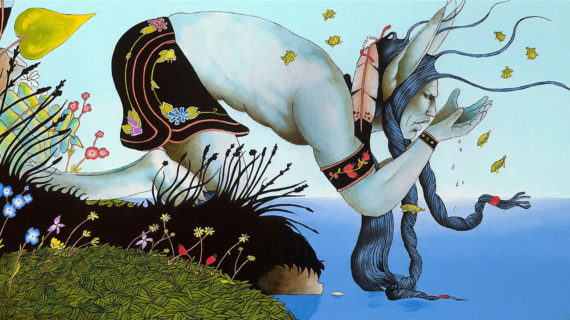

Follow Us